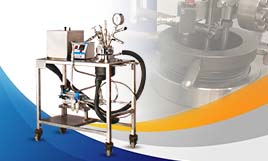The Significance of Fatigue Testing
Fatigue testing is a vital procedure that is found in a majority of materials testing systems. Engineers and technicians use this process to predict the durability of a component or part under its operating conditions and assess the failure of parts and materials under redundant fluctuating loads that are lower than the material’s ultimate yield or tensile strength.
The term ‘fatigue’ in engineering terminology means failure and damage of materials under cyclic loads. Fatigue testing can be defined as the procedure for progressive localized fixed structural change happening in a material subjected to conditions that generate alternating strains and stresses at some point or points. All of which might culminate in complete failure or cracks after a sufficient number of fluctuations.
Continue to read till the end to learn more about fatigue and the significance of fatigue testing.
What exactly is Fatigue?
Fatigue is basically a type of structural damage generally found in cyclically loaded structures. It is characterized via an initiation and gradual growth of cracks that will ultimately lead into a catastrophic fracture or damage of a material.
Now, unlike the structural failure that is caused due to an overload, the fatigue damage happens when the magnitude of the stresses is under the material’s yield strength and hence, tends to covertly manifest without showing any obvious signs or deformity.
The rate of a fatigue crack growing depends on the properties of the material along with the cycle frequency and intensity of the applied load. Engineers with the help of fatigue testing are able to evaluate a material’s structural durability as the system tests and analyzes its capacity to withstand cyclic loading conditions.
Importance of Fatigue Testing
With the help of fatigue testing, the engineers or technicians are able to understand the progressive damage that is caused by multiple loadings over a period, none of which aren’t enough on their own to create material fracture.
Fatigue testing is utilized in several distinct applications such as testing of automobiles, aircraft parts, construction of medical devices, and more. While a component or material in the real world might take several years to actually suffer absolute failure, the use of suitable materials testing systems that includes fatigue testing capabilities helps in shortening the time by applying the loads in rapid successions, often at a frequency of numerous cycles per second based on the application.
Fatigue testing not just ensures determining the product quality but also to make sure safety of critical structural components.
The LFV-E Electrodynamic Table-Top Fatigue Testing Systems
This is a fluid-free, non-hydraulic system that has force capacities up to 12 kN for fatigue and durability testing. It can be used for constant load, cyclic (dynamic) swelling, monotonic or alternating loads in a closed loop control.
This is a user-friendly system for fatigue testing that ideally supports a wide range of materials. In comparison to pneumatic or servo hydraulic drives, this system delivers high-efficiency performance.
The LFV-E Electrodynamic Fatigue Testing System is low noise vibration, easy to operate and a compact design system that is designed to meet the unique lab requirements.








